
WASHINGTON – The first day of the Surface Transportation Board’s unprecedented hearing focusing on growth in the rail industry – or, more precisely, the lack of it – allowed the Class I railroads to tout their successes.
But the rail executives had to wait for an analyst panel that outlined the breadth and depth of the industry’s growth problem and its ongoing loss of market share to trucks.
Adriene Bailey, a railroad veteran who leads the rail consulting practice at Oliver Wyman, notes that rail tonnage is down 8% from 2017 through 2023 – while truck tonnage increased 3% over the same period.
The U.S. Department of Transportation anticipates that rail market share will drop by 4% by 2050, but that likely understates the potential decline due to freight shifting to trucks, she says. If railroads fail to hold market share through 2050, they would stand to lose $476 billion in revenue and $128 billion in operating income.
To maintain market share, Bailey says railroads will need to seek shorter haul intermodal business for freight moving less than 750 miles; tap into manufacturing growth in North America, partly through transloading for sites not directly served by rail; and tighten partnerships with short line railroads.
The Class I railroads are more focused on volume growth now than they have been in decades, Bailey says, but investors are not on board.
Rick Paterson, an analyst with Loop Capital Markets, noted that overall combined volume for BNSF, CSX, Norfolk Southern, and Union Pacific declined 7% between 2000 and 2023, a period in which the economy grew 50%, industrial production was up 13%, and truck tonnage grew 43%.
Since the peak traffic year of 2006, railroads managed to lose volume in sectors where overall production rose in the U.S., including finished vehicles and corn. Intermodal volume, including empties, grew 6% between 2006 and 2023 when measured by containers and trailers, Paterson says. But intermodal tonnage fell 16% while trucking tonnage grew 35%, he says.
Paterson contends that rail traffic has been sinking because the Class I’s have been exploiting their pricing power, provide unreliable service that doesn’t fit modern supply chains, and are captive to a Wall Street that does not believe railroads can grow.
Byron Porter, a former shipper who is now CEO of telematics equipment manufacturer Hum Industrial Technology, says railroads can’t shift from a profitability strategy to a growth strategy because Wall Street demands ever higher profit margins.
Scott Group, an analyst with Wolfe Research, had a more optimistic message. The lack of growth reflects a mix of trends like the decline of coal and paper, two freight recessions in the past decade, and self-inflicted wounds related to the implementation of Precision Scheduled Railroading operating models.
But he notes that rail volume is on the upswing, and for the first time rail service has not suffered as traffic has grown. Why? After recovering from widespread crew shortages in 2022, railroads did not trim their workforces as traffic declined. That hurt profit margins for the past couple of years, he says, but the investment is paying off by proving that railroads can grow without sacrificing service. Meanwhile, railroads have begun regaining share from trucks for the past six months, Group says.
“For the first time in basically 15 years … we’re seeing railroad volumes growing this year and railroad service metrics are improving at the same time. So it does seem that there are signs of a different industry,” Group says.
Board Chairman Robert E. Primus – who blamed short-term investors for many of the rail industry’s ills – says Wall Street has outsized influence on Class I railroads and encouraged analysts to promote service and growth.
Class I’s Tout Plans
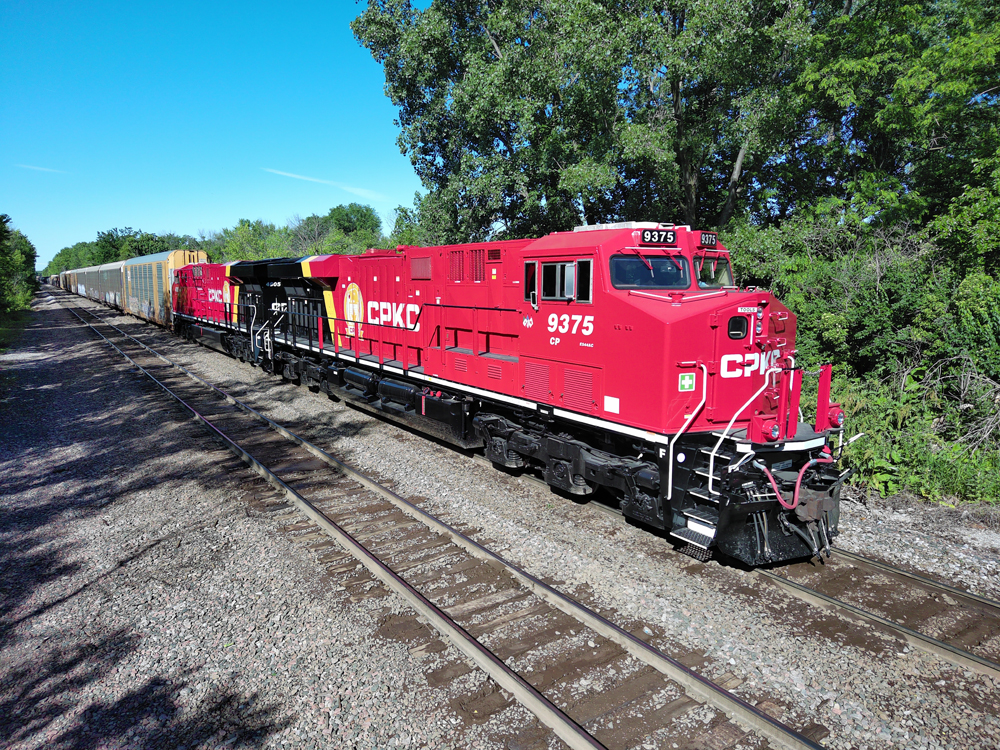
Canadian Pacific Kansas City Chief Marketing Officer John Brooks told the STB that the new transborder railway – and its predecessors, Canadian Pacific and Kansas City Southern – have outgrown the rest of the industry combined since 2018.
The growth is the outcome of the proper use of Precision Scheduled Railroading, Brooks says. Operational and service excellence, he says, creates a virtuous cycle that includes customer collaboration, efficiency, providing predictable service and capacity, which in turn leads to customer trust and more growth and investments to support growth.
His written testimony focused on CPKC’s growth projects, including the 180/181 cross-border intermodal service linking Chicago with points in Mexico; the new Americold partnership that will send beef and pork from Kansas City to Mexico in reefer containers that will return north with Mexican produce and food products; the closed-loop finished vehicle service linking assembly plants with auto ramps across the CPKC network; carload business such as lumber and construction materials sent to Texas markets; the second bridge that will open this year across the Rio Grande at Laredo, Texas; and the deal with CSX to create a new corridor linking the Southeast with Texas and Mexico via the acquisition and operation of Genesee & Wyoming short line Meridian & Bigbee, which the STB has yet to approve.
Primus told Brooks he doesn’t have a problem with the concept of PSR, but that he doesn’t like the way the U.S. railroads have implemented the low-cost operating model, which led to service problems beginning with CSX in 2017.
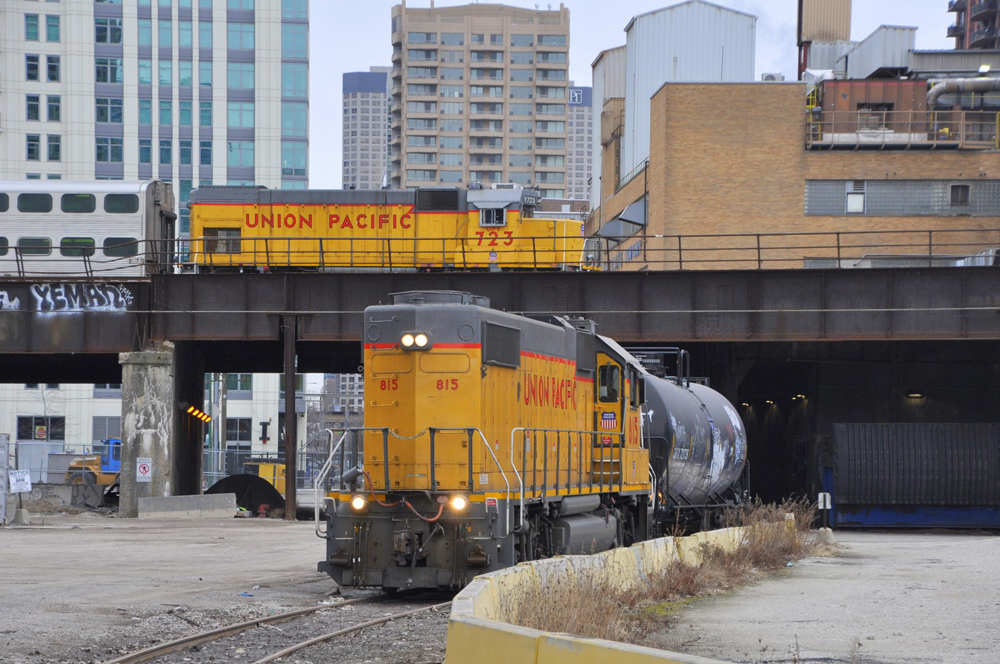
Kenny Rocker, Union Pacific’s executive vice president of marketing and sales, said that outside of coal, the railroad has been growing. Since 2010, UP’s volume is up by 500,000 carloads if coal is factored out of the equation. Rocker then rattled off growth stats: Biofuels up 65%, beverages up 62%, auto parts up 47%, industrial products up 68% in plastics and 42% in chemicals. The railroad, Rocker says, has hustled to backfill the decline of coal volume.
UP has invested in new intermodal terminals in Southern California, Phoenix, and the Twin Cities, Rocker says, and plans to further expand intermodal capacity by 11% in the next few years. The railroad also has expanded transload operations.
The railroad’s growth strategy under CEO Jim Vena is built on safety plus service and operational excellence, Rocker says. The railroad’s focus on being efficient and having a lower cost structure helps it compete in shorter haul markets, he says, such as recent wins to move shipments of fertilizer, construction materials, and lumber less than 500 miles.
The railroad has $1 billion worth of business in its opportunity pipeline. “To us, every carload matters when you’re hunting for growth,” Rocker says.
In an exchange with Rocker, Primus noted that despite growth in some traffic segments, UP has experienced sharp declines in others over the past two decades, such as a 32% decline in automotive traffic and a 23% drop in agricultural shipments. He expressed concern about Rocker’s “extremely thin” written statement that didn’t expand on growth opportunities, and noted that over the past few years the railroad’s service levels have been below what should be UP’s standard.
The chairman also said he had concerns about UP’s pricing strategy, meeting acceptable profit margins, and how that squares with the railroad’s obligations as a common carrier. “We don’t measure common carrier to profit margin or whether or not a business fits within the profit margins. It’s whether or not they have a legitimate ask for service,” Primus says.
Rocker said UP’s service has improved over the past year. “Yes, the last two to three years were not our brightest moment,” he says. “But here we feel really confident about where we are.”
Congestion-related embargoes are way down, averaging less than one per week, thanks in part to customers having better visibility into their car pipelines, Rocker says. In addition, UP has kept a capacity buffer that has enabled the railroad to capture rising demand, including an unanticipated spike in international intermodal volume.
“We’ve kept a buffer out there to help us grow and support the increased volume that’s come on especially this year,” Rocker says. “So we’re excited that we’re able to handle that business.”
Primus said he was worried about UP officials’ comments to investors about not taking on traffic that didn’t fit profit margin targets, particularly for traffic involving smaller shippers. “To me that’s not looking at it from a growth standpoint or even from a common carrier standpoint,” he said.
Rocker responded that UP always wants to be competitive on price. “It doesn’t do us any good if we have it priced at a point that we’re not able to grow,” Rocker says. “There’s nothing to suggest that we’re going to price ourselves out of a market. We want our price to be competitive.”

Tom Williams, BNSF’s new chief marketing officer, noted that BNSF has led the industry in growth this year and that in August it handled a record number of domestic intermodal shipments.
Williams highlighted the railroad’s investments in growth projects for both intermodal and carload commodities.
Its proposed Barstow International Gateway in Southern California – at $1.5 billion the industry’s single biggest intermodal project ever – aims to take containers by rail from the ports of Los Angeles and Long Beach to a new transload center co-located with a new intermodal terminal. BNSF also is developing a massive new intermodal terminal in Phoenix.
The railroad and partner J.B. Hunt last year launched Quantum domestic intermodal service, which aims for better than 95% on-time performance on schedules a full day faster than traditional intermodal.
BNSF’s agricultural volume is up 25% since 2000, largely due to its grain shuttle program that serves 268 origins and 119 destination facilities.
The railroad’s logistics centers, meanwhile, provide transloads for carload and unit train customers. BNSF’s new Shortline Select program, now in a pilot phase with G&W’s Alabama & Gulf Coast, is streamlining interchange and pricing while putting AGR’s developable real estate into BNSF’s industrial sites database. It will be expanded to other short lines, Williams says.
Coal will remain a drag on the railroad’s overall growth, Williams says, but BNSF has increased its market share to 65% in the West, up from 52% in 2008, as it tries to help coal-fired power plants remain competitive in the face of lower-cost natural gas and renewable energy projects.
Primus raised concerns about BNSF’s service levels and resiliency this year amid reductions in staffing levels.
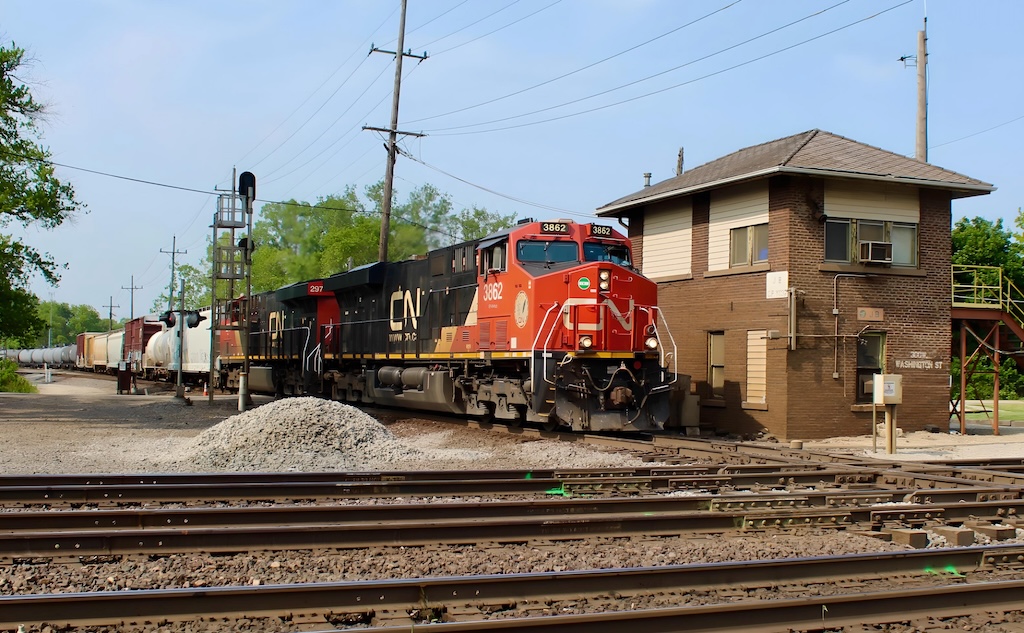
Derek Taylor, Canadian National’s chief field operating officer, says “CN’s purpose is to power the economy.” The railway’s three priorities: Sustain and build service excellence, grow the business, and grow its people.
CN remains focused on departing intermodal and merchandise trains on time, then threading in bulk trains to minimize meets on its predominantly single-track railroad. The railway continues to run trains to siding length, which can mean operating trains of up to 12,000 feet.
The railway has improved coordination between its operations and marketing teams, which has helped keep operations smooth as new volumes materialize.
Patrick Lortie, CN’s chief strategy officer, says the railway seeks growth by gaining more business from current customers, extending its reach through partnerships and acquisitions, and innovating to improve the customer experience.
Investments in new transload centers, intermodal facilities, and equipment – from modernized locomotives to new freight cars – have helped support growth, he says. CN is working on developing shortline interchange scorecards that will help the Class I and its connections improve and monitor service. A part of the short line pilot includes data sharing on car locations and estimated arrival times.
Primus urged both BNSF and CN to join RailPulse, the joint venture that aims to equip freight cars with GPS-based telematics that will allow customers to determine where their cars are anywhere in North America. The two are the only Class I’s not currently participating in RailPulse.
Short Line Success Stories
Members of a short line panel told the STB that they have been able to grow by having a deep understanding of their customers, investing in infrastructure, working with local business development groups on rail-served properties, and by forging closer ties with Class I railroads.
Representatives from the Sierra Northern Railway, R.J. Corman, Genesee & Wyoming, New York & Atlantic Railway, and Iowa Interstate told the board how they’ve been able to gain new volume one car at a time or by cooperating on interchange moves with other short lines or Class I partners.
Primus said that after hearing their stories, it was clear that short lines were the “wildcatters” who will find growth for the rail industry.
Rail Labor: Don’t Expect Growth
Three labor leaders said the sharp drop in railroad employment since 2016 makes it impossible for the big U.S. Class I railroads to grow.
“Freight rail is of vital importance to the U.S. economy. Unfortunately, safety, service, and staffing deficiencies continue to plague the industry and contribute to its lack of growth,” says Greg Regan, president of the Transportation Trades Division of the AFL-CIO.
“What appears to be missing is their willingness to do so,” Regan says, noting the 30% drop in overall U.S. Class I employment since 2016.
Mark Wallace, national first vice president of the Brotherhood of Locomotive Engineers and Trainmen, said the use of ever-longer trains under Precision Scheduled Railroading has reduced the frequency of service and led to more breakdowns en route. Customers are paying more, he says, but are getting less, so it should be no mystery why rail traffic is not growing.
Richard Edelman, a lawyer representing the unions whose workers inspect, maintain, and repair track and equipment, says there’s no way the railroads can grow with a bare-bones workforce. The number of shop, track, and signal workers has declined 24% since 2016, he notes, which is far deeper than the 6% decline in traffic over the same period.
The second day of the growth hearing will continue on Tuesday and is scheduled to include presentations from shipper associations, CSX, and Norfolk Southern.






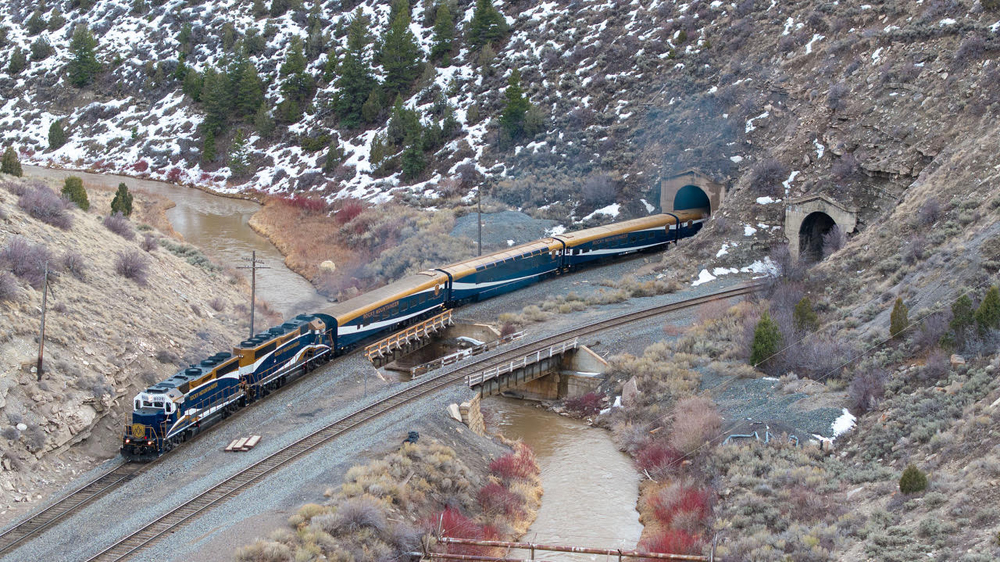
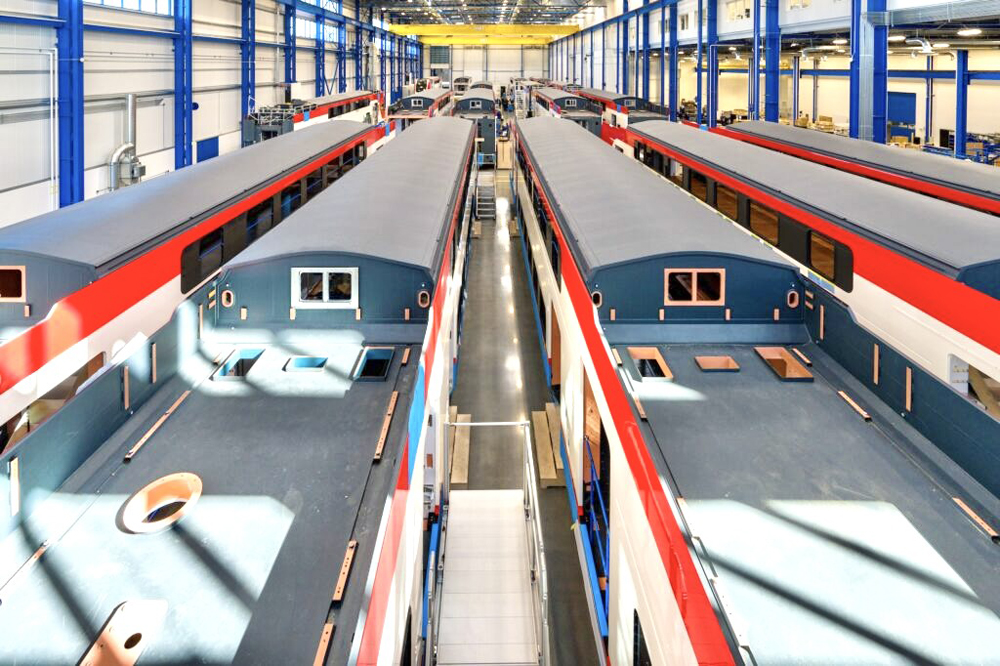
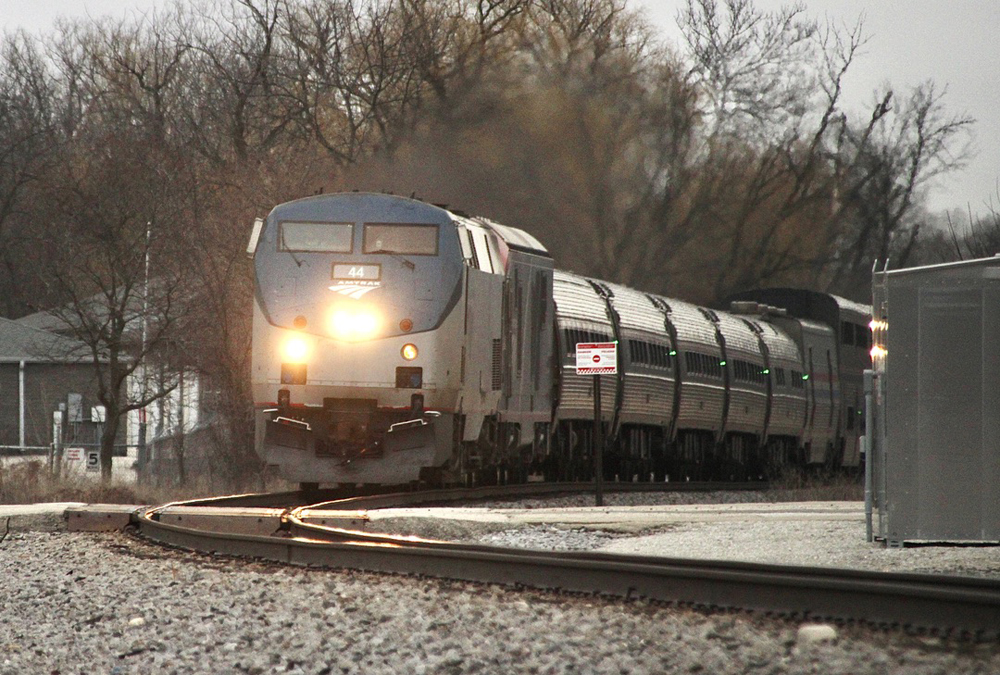
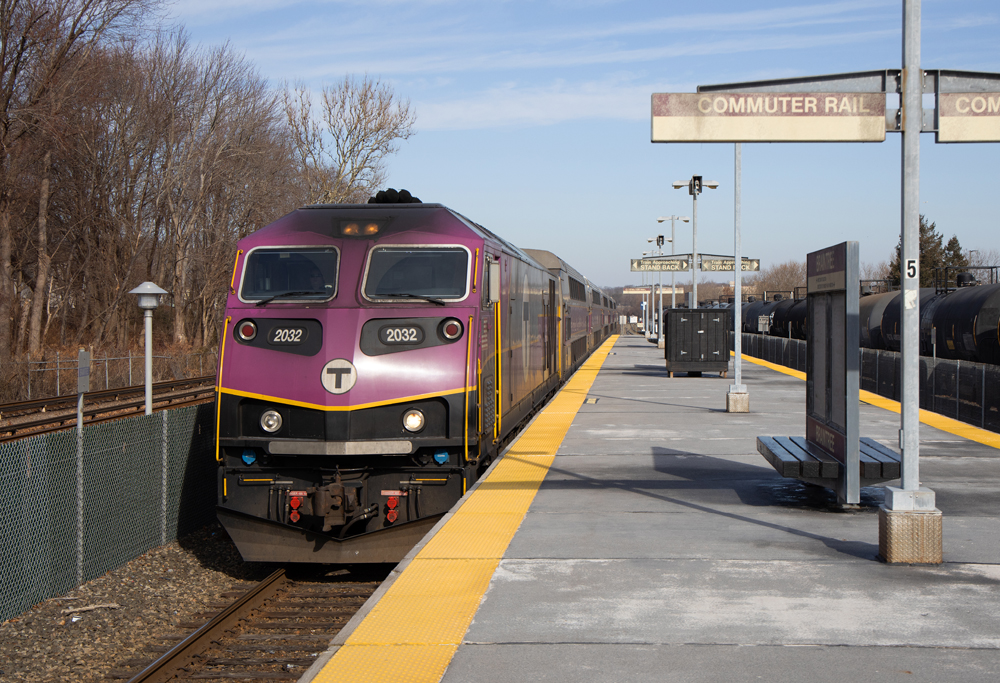




Edleman, the labor lawyer said, “…there’s no way the railroads can grow with a bare-bones workforce. The number of shop, track, and signal workers has declined 24% since 2016, he notes, which is far deeper than the 6% decline in traffic over the same period.”
In a sense he is telling the truth. Every time Wall Street squawks, the PSR railroads start laying off their maintenance craft people because they are a cost with no return. But what if locomotive availability suffers, or MOW functions are reduced causing slow orders or even derailments like the one on UP because a switch on a siding filled with long term storage of well cars was not spiked down. Those kind of things are always blamed on something else, but never the real problem that the people who would have done that work to prevent those problems were languishing in unemployment lines while the stockholders and Wall Street short term “bookies” like Ancora were only looking for the short term rip off at the expense of everyone else. Unfortunately in the US, Mr Rose is correct. PSR has become a weapon that is anti growth and anti employment because the bottom line success marker, lower and lower operating ratios, is unsustainable! The railroad tree is pretty ugly when the limbs and the roots are all hacked away…
I wouldn’t object to having the Class 1 RR’s, or any significant transportation company, have to get DOT approval for any company stock buy backs. That would be one step. There are also tax incentives that can be developed to avoid excessive cuts in maintenance and improvements.
get rid of PSR is the first thing that need to go if you want growth. as long as wall st and PSR are involved rail and service will never grow
Everyone talks about revenue tons. What is not said is revenue ton miles. Have no idea what that metric is now compared to 2016’s high mark. Of course RTMs are not all the same for different types of freight, Probably Haz Nat cargo is highest revenue per mile with who knows what is lowest.
CN does have correct idea of limiting train length to siding lengths. Don;t know about CP but other RR do not seem to follow that simple item to keep fluidity, Certainly not CSX here when it doubles empty unit trains that cannot fit any sidings around here.
CN has a single track railroad thanks to E. Hunter Harrison, who ordered second main tracks ripped up. Are they missing that capacity now? Hmmmmm.